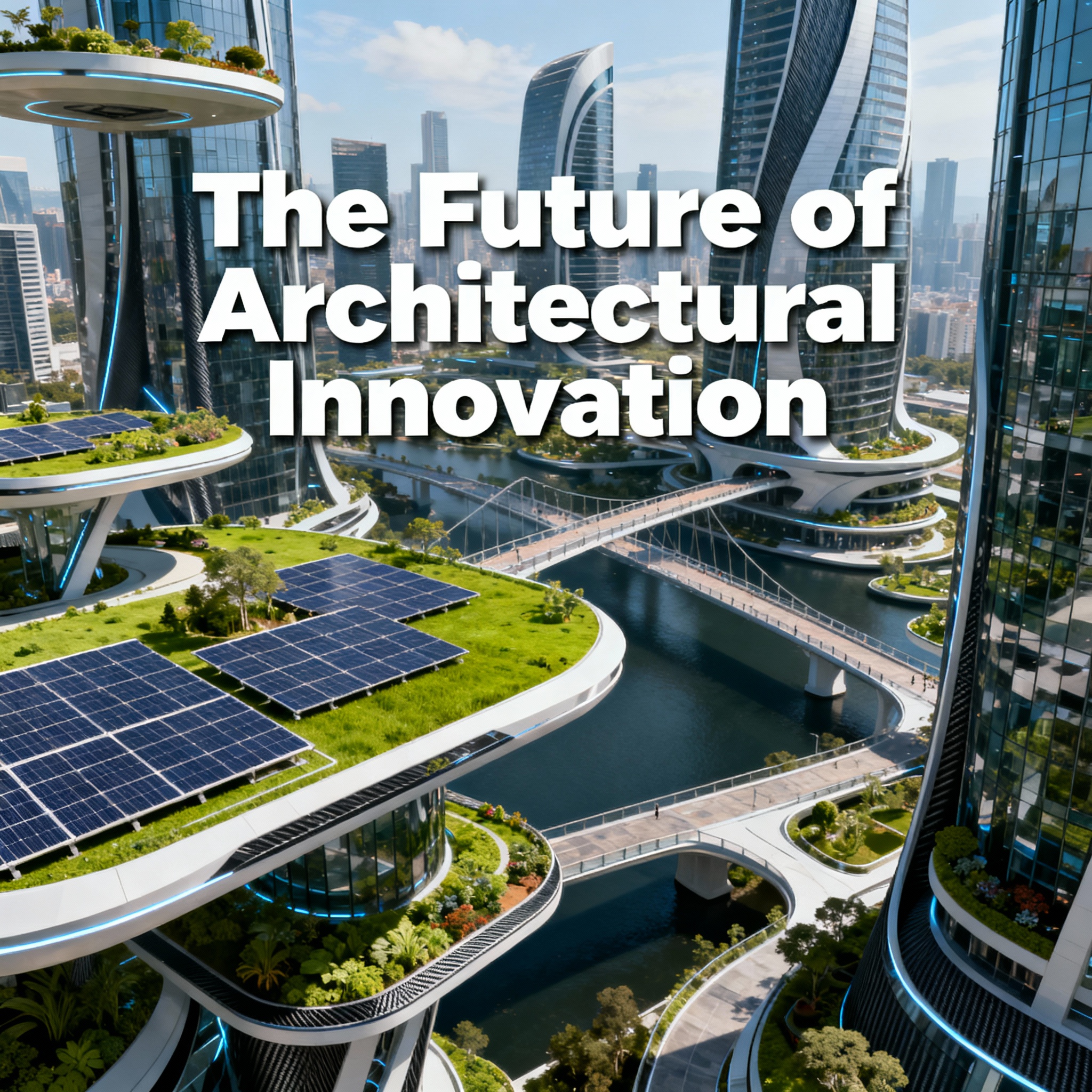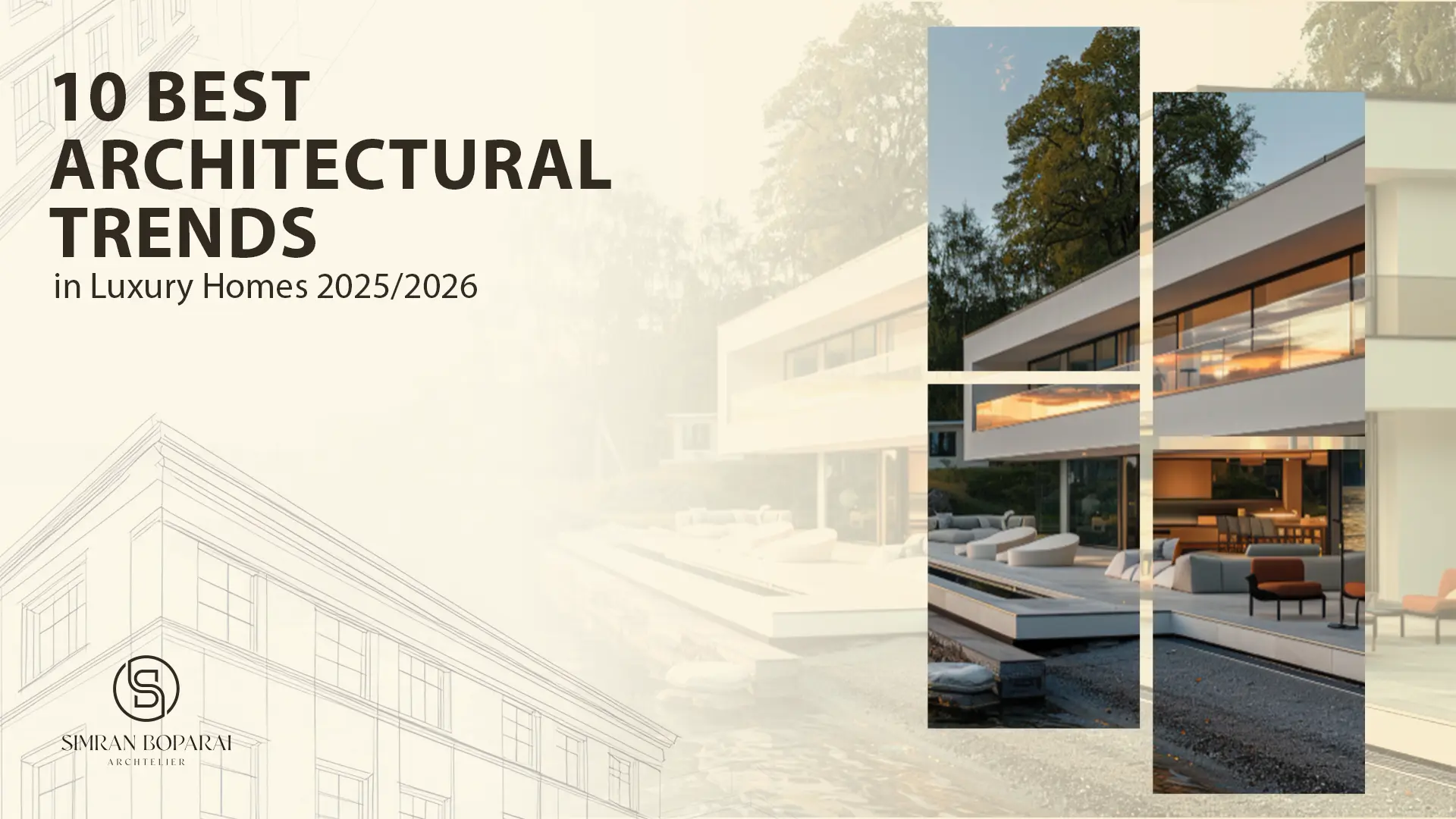Introduction
The world of luxury homes is evolving faster than ever before. Architecture is no longer just about grandeur—it’s about meaning, sustainability, and individuality. Homeowners today desire spaces that reflect their personality while embracing technological advancements and eco-friendly living.
The new wave of design focuses on creating living environments that are intelligent, artistic, and emotionally resonant. These are not just houses—they are masterpieces that balance comfort, innovation, and timeless beauty.
Renowned architectural and interior design firms such as Simran Boparai have observed this transformation closely, merging aesthetic refinement with forward-thinking design. As we step into 2025 and 2026, here are the best architectural trends redefining the meaning of luxury living.
Many high-end homeowners still view architecture through the lens of traditional luxury—massive spaces, expensive finishes, and ornamental design. However, this outdated perspective is fading fast. Today’s affluent homeowners seek modern architecture that blends sustainability, advanced technology, and a personal touch.The challenge is that without adapting to these emerging architectural trends, properties can quickly lose relevance and value. A home that looks luxurious but lacks smart features, sustainable design, or a connection to nature can feel outdated within just a few years.
The solution lies in adopting the best architectural trends of 2025/2026 — designs that balance elegance with practicality, innovation with emotion, and luxury with responsibility. These trends not only enhance lifestyle but also ensure long-term investment value.
Sustainable Luxury Design
Sustainability has become the soul of modern luxury homes. Architects are merging environmental awareness with aesthetic brilliance to create energy-efficient homes that reduce waste and promote harmony with nature.
Features like solar panels, rainwater harvesting systems, and recycled materials are now considered essential elements of high-end architecture. In 2025 and beyond, expect to see homes built with eco-conscious architecture that uses local materials, natural insulation, and energy-efficient technologies.
Even luxury finishes are being reimagined—think bamboo flooring, organic stone cladding, and reclaimed timber. The result? A stunning blend of sophistication and sustainability, proving that green can indeed be glamorous.
Smart Homes with Integrated Technology
Technology has become the heartbeat of luxury home architecture. Homeowners want intelligent systems that simplify daily life, improve safety, and enhance comfort.
Smart home automation now controls everything—from lighting and security to climate and entertainment. AI-driven assistants learn homeowner preferences and adapt automatically. For example, smart thermostats regulate temperature based on outdoor weather, while voice-activated controls manage curtains and appliances.
Connected living spaces are no longer futuristic—they’re expected. Smart glass, digital art walls, and IoT-based systems ensure seamless connectivity across every room. The goal is simple: creating homes that think, respond, and evolve with their occupants.
Biophilic Architecture
Biophilic architecture connects people to nature through thoughtful design elements. As urbanization rises, homeowners crave a deeper bond with the natural world.
This design approach includes features such as indoor gardens, natural ventilation, living walls, and green roofs. Materials like wood, stone, and terracotta create a sense of tranquility. Large floor-to-ceiling windows allow natural light to flood interiors, promoting both mental and physical wellness.
Architectural firms like Simran Boparai incorporate nature-inspired design in their luxury projects, where serenity and sophistication coexist. This approach not only reduces stress but also enhances air quality and overall well-being.
Open-Concept Living Spaces
The open-plan architecture trend continues to dominate luxury home design in 2025/2026. Modern homeowners prefer fluid layouts where living, dining, and kitchen spaces merge seamlessly.
This concept fosters interaction, movement, and openness. It replaces traditional compartmentalized rooms with multifunctional zones that encourage connection. Sliding glass doors and retractable walls create continuity between indoor and outdoor living.
These designs emphasize the power of spatial flow and light, bringing in fresh air and scenic views while offering flexibility for gatherings and family time.
Minimalist yet Statement Designs
In today’s world, luxury doesn’t shout—it whispers. Minimalist architecture focuses on elegance through simplicity. Instead of ornate details, designers now prioritize clean lines, neutral tones, and high-quality finishes.
Minimalism doesn’t mean emptiness—it’s about purpose. Each object serves a function, each space tells a story. The luxury lies in refinement, not clutter.
Architects often use marble interiors, brushed brass accents, and bespoke furniture to add understated sophistication. It’s the “less is more” philosophy—executed with the finest craftsmanship.
Adaptive Reuse and Smart Renovations
One of the most forward-thinking trends is adaptive reuse architecture—transforming old or historic buildings into luxurious, modern homes.
Instead of demolishing, architects preserve structural character while integrating modern materials and systems. For instance, a century-old factory can be reborn as an elegant loft residence, combining rustic charm with smart technology.
This approach promotes sustainability while giving each property a distinctive identity. Smart renovation strategies also enhance energy performance, ventilation, and natural lighting—without compromising on luxury.
Luxury Outdoor Living Spaces
Luxury living now extends beyond four walls. Homeowners are investing heavily in outdoor architecture that rivals the elegance of interior spaces.
Expansive landscape architecture, infinity pools, sunken lounges, and outdoor kitchens create immersive experiences. Pergolas with retractable roofs and ambient lighting design ensure comfort and functionality year-round.
As people value time in nature more than ever, outdoor architecture is becoming an integral part of the high-end residential design narrative. It’s about blurring the boundaries—creating sanctuaries under the open sky.
Art-Integrated Architecture
Art is no longer just décor—it’s architecture. The rise of art-integrated architecture allows homes to express personality and emotion through structure itself.
Walls become canvases, ceilings become sculptures, and staircases become installations. Designers integrate art directly into architectural elements like architectural lighting, textured walls, and custom-built sculptures.
This trend ensures that every space is unique, telling the story of its owner. Homes become galleries—living, breathing reflections of identity and taste.
Wellness-Oriented Architecture
Post-pandemic living has redefined luxury. Health, comfort, and mental well-being are now central to design philosophy.
Wellness architecture combines spatial psychology, natural materials, and smart systems to enhance daily living. Elements like air purification systems, circadian lighting, soundproofing, and thermal comfort zones ensure physical and emotional balance.
Spa-inspired bathrooms, yoga decks, and meditation pods are no longer indulgences—they are necessities. Firms like Simran Boparai design spaces that heal, calm, and rejuvenate—where architecture supports the soul.
Personalized and Contextual Design
Luxury today is deeply personal. Homeowners want custom architectural design that reflects their individuality and cultural roots.
Architects are creating contextual designs that adapt to geography, climate, and lifestyle. Whether it’s a modern villa overlooking the sea or an urban penthouse surrounded by greenery, each project is tailored uniquely.
This trend celebrates emotional connection, ensuring that homes feel personal, timeless, and alive. The era of copy-paste mansions is over—luxury is now bespoke.
Emerging Materials and Techniques
As design evolves, so do the materials that define it. The next generation of luxury architecture will rely heavily on innovation and performance.
- Engineered wood and porcelain slabs for sustainable finishes.
- Microcement flooring for durability and sleek aesthetics.
- Acoustic panels and smart glass for comfort and privacy.
- 3D printing in architecture for precision and rapid construction.
- Parametric design tools that allow architects to craft structures that are both efficient and artistic.
These techniques enable architects to experiment freely, pushing the boundaries of creativity and sustainability simultaneously.
The Role of Emotion in Modern Luxury Architecture
Beyond structure and style, the true hallmark of luxury architecture lies in emotion. The best homes don’t just look beautiful—they feel meaningful.
Spaces are being designed to evoke calmness, curiosity, and belonging. Lighting, texture, and spatial proportion play crucial roles in achieving this. A well-crafted home resonates deeply with its occupants, creating lasting emotional value that transcends trends.
The Future of Architectural Innovation

Looking ahead, the best architectural trends of 2025 and 2026 hint at an exciting, human-centered future. Expect to see architecture becoming more interactive, responsive, and sustainable.
Homes will generate their own energy, adapt to environmental conditions, and connect with urban ecosystems. Digital design technologies will allow for unprecedented customization, while eco-friendly architecture will remain the backbone of luxury living.
Luxury will continue to evolve—but its core values of comfort, creativity, and consciousness will remain timeless.
Conclusion
The luxury homes of tomorrow are not just built—they are crafted with purpose, precision, and passion. Architecture in 2025/2026 focuses on harmony: between people and place, innovation and tradition, indulgence and responsibility.
Leading design firms like Simran Boparai understand this transformation—creating spaces that capture both the spirit of the time and the individuality of those who live within them.
The best architectural trends today are more than blueprints; they are reflections of evolving lifestyles, environmental consciousness, and human emotion. The future of luxury homes lies in authenticity, sustainability, and the art of thoughtful design.
FAQs
- What defines modern luxury architecture in 2026?
It’s defined by sustainability, advanced technology, emotional design, and the seamless integration of indoor and outdoor living. - Why is sustainability crucial for luxury homes?
Sustainability ensures energy efficiency, environmental responsibility, and long-term property value—without compromising comfort. - How do smart homes improve modern living?
They offer automation, enhanced security, and convenience by allowing homeowners to control every aspect of their environment remotely. - What makes biophilic design essential in architecture?
It connects humans with nature, improving mental health and creating calming, balanced living spaces. - What materials are trending in luxury home architecture?
Engineered wood, marble, porcelain slabs, microcement, and recycled materials are leading the design world.
